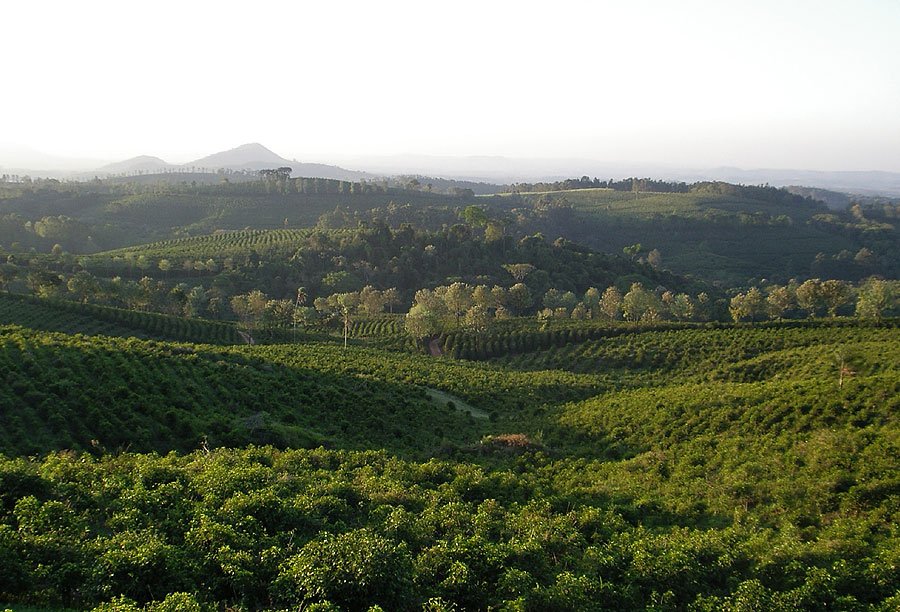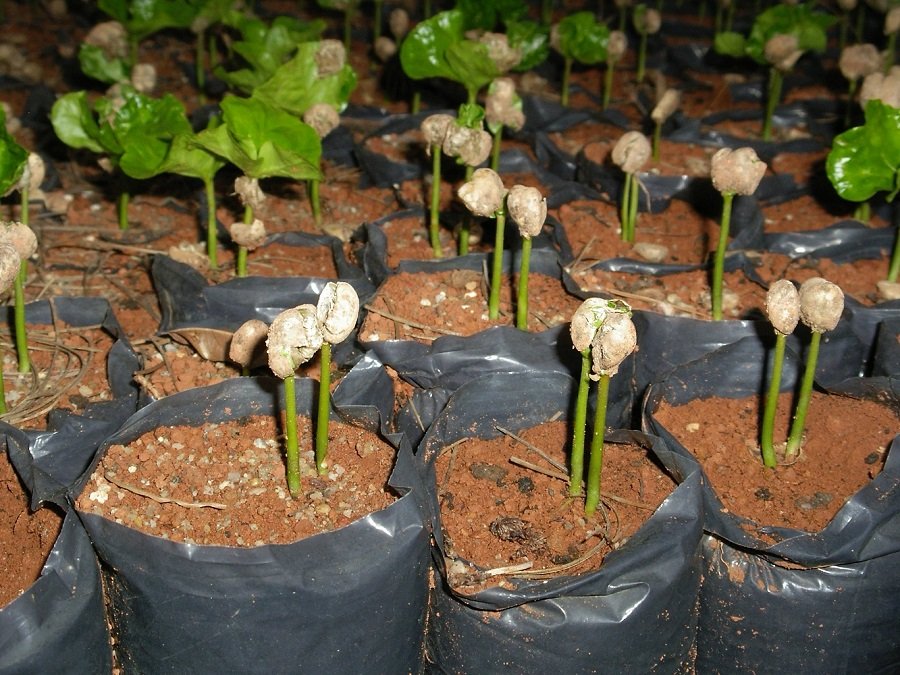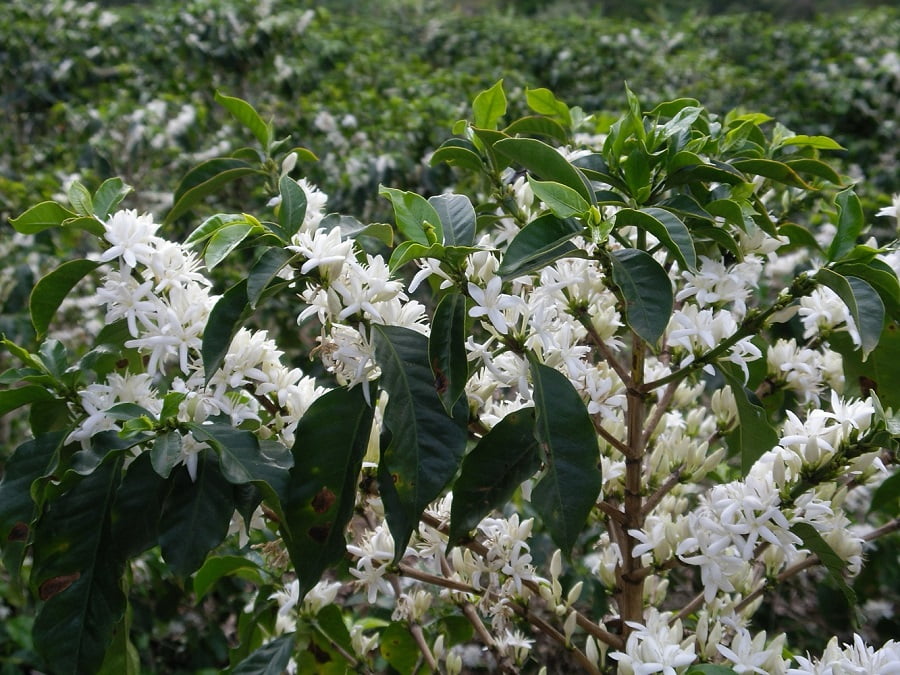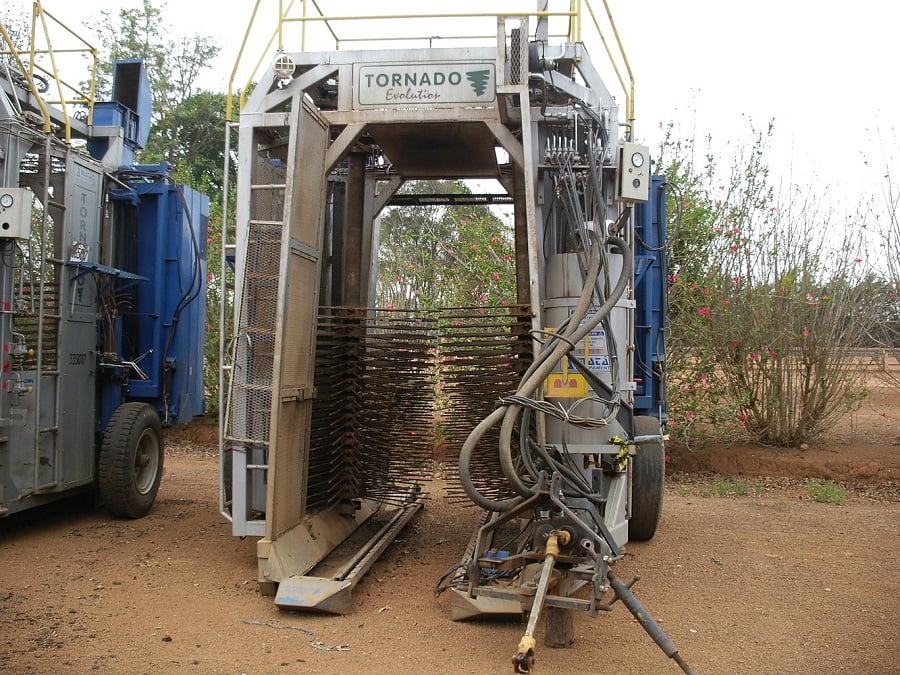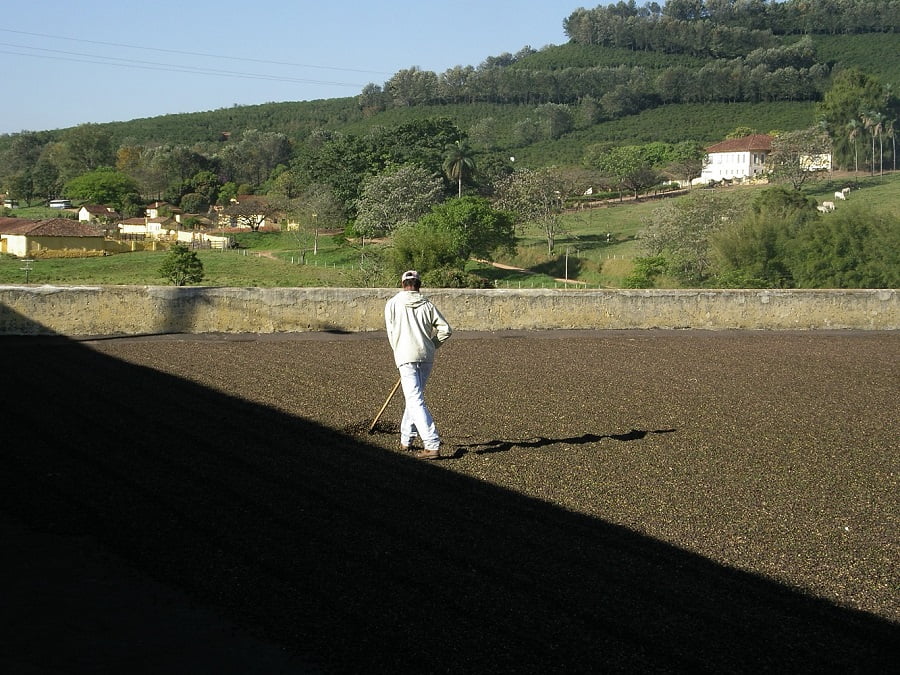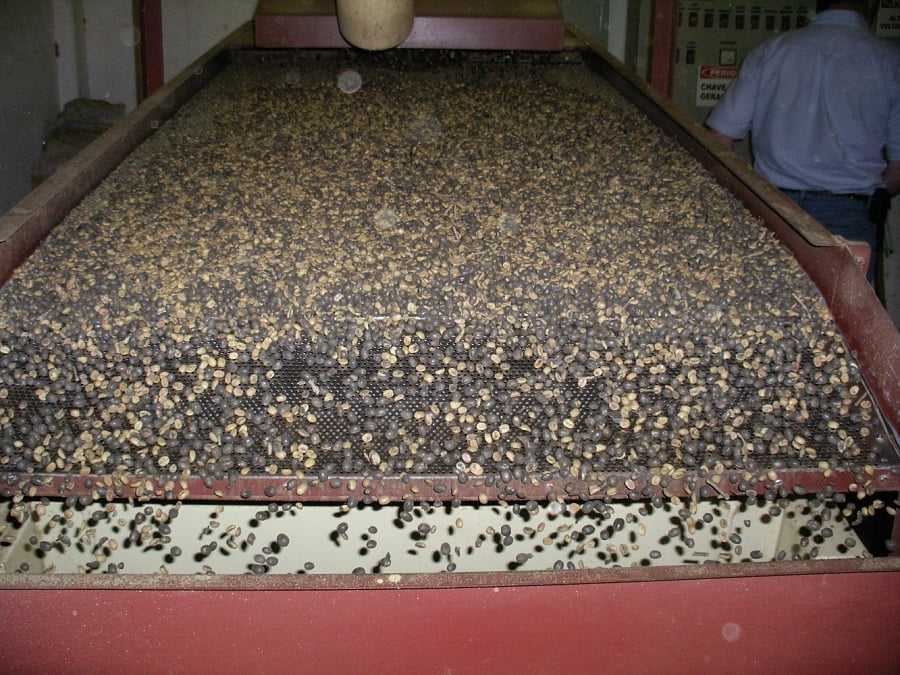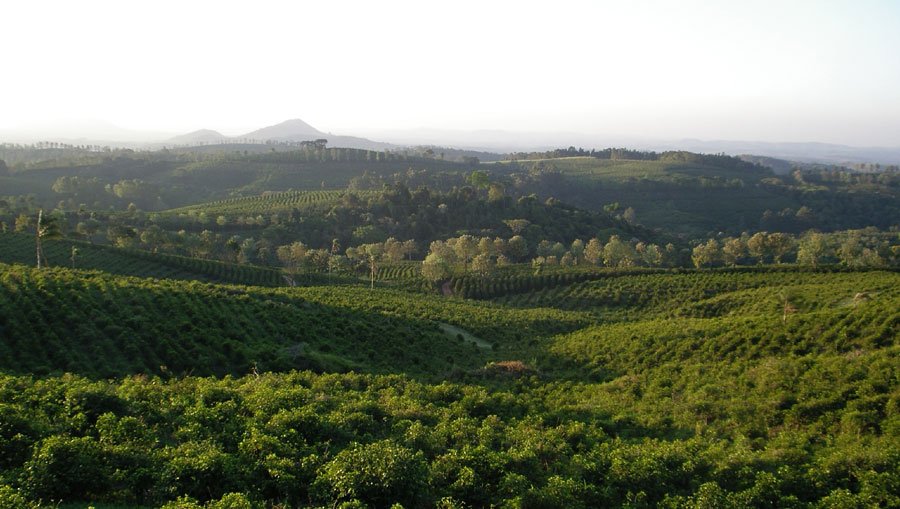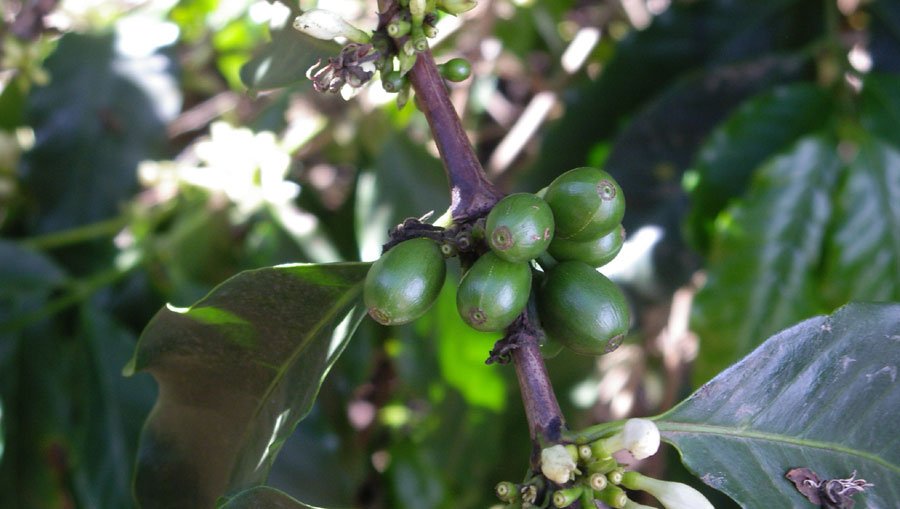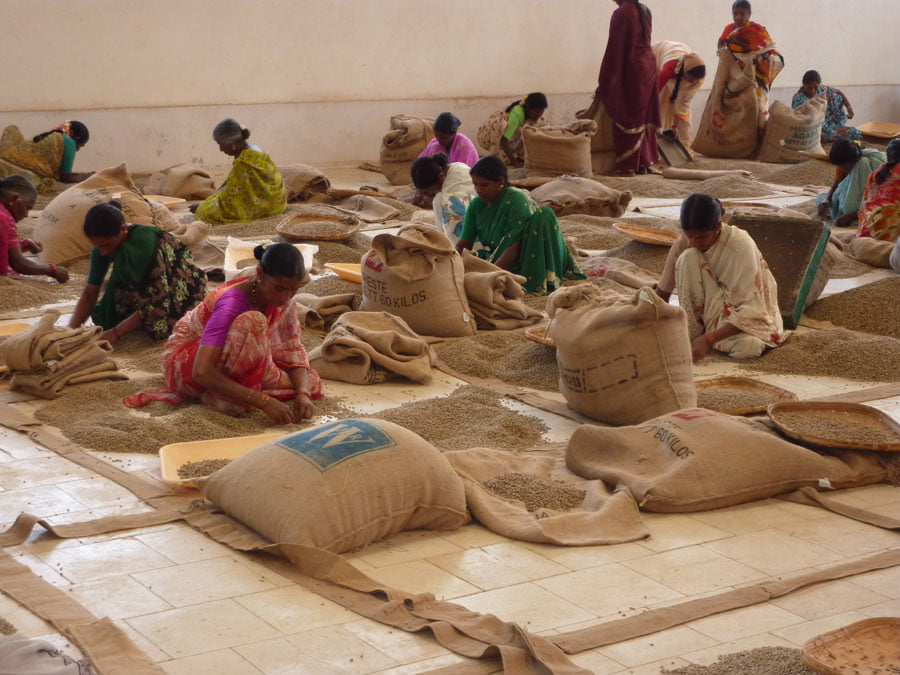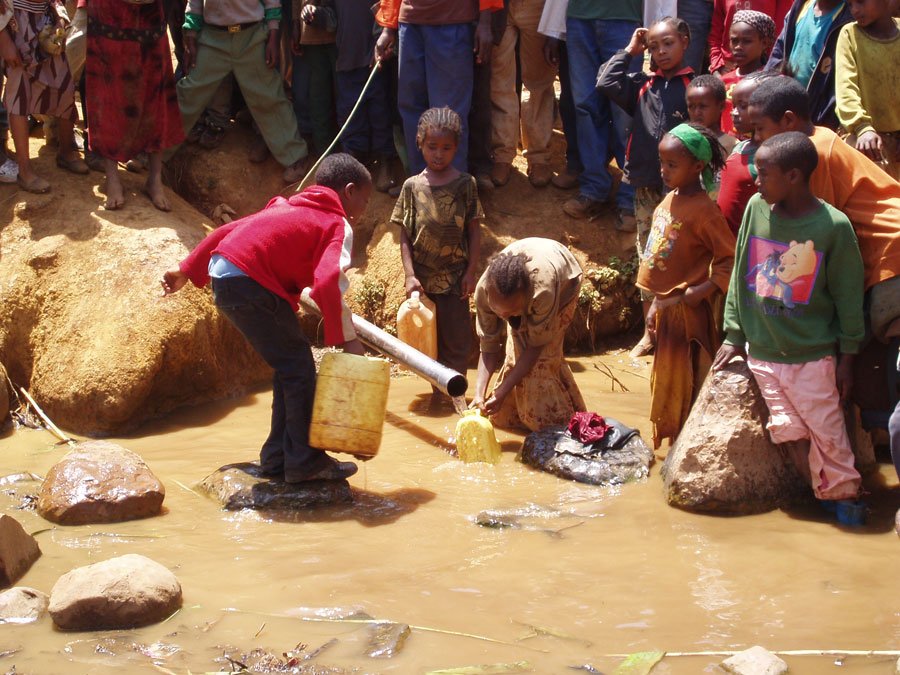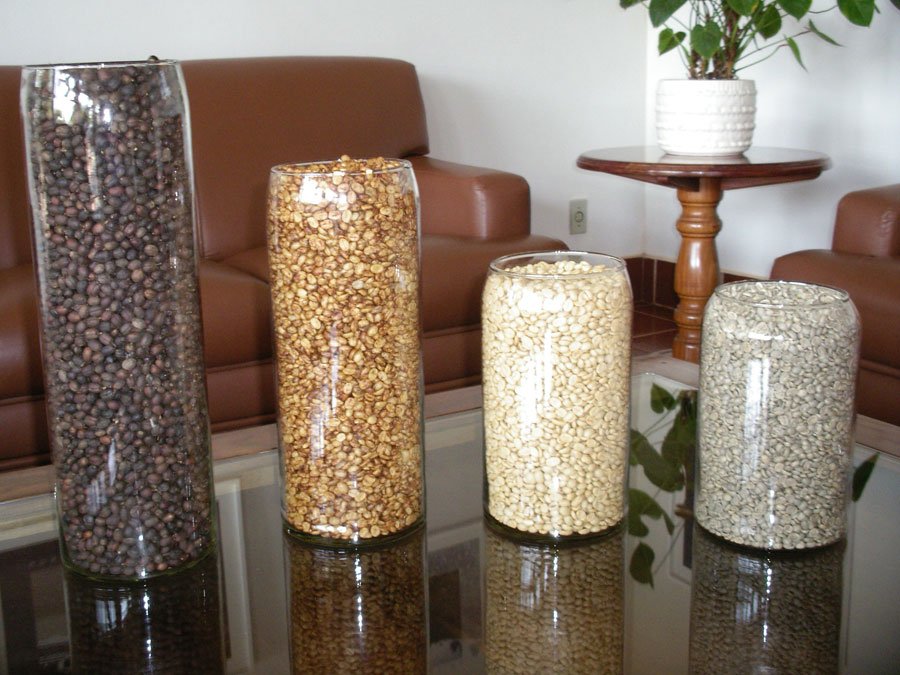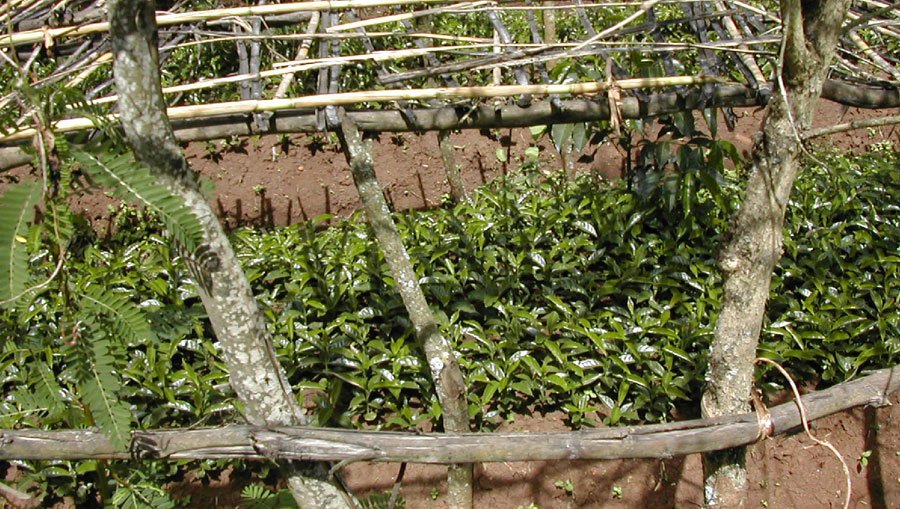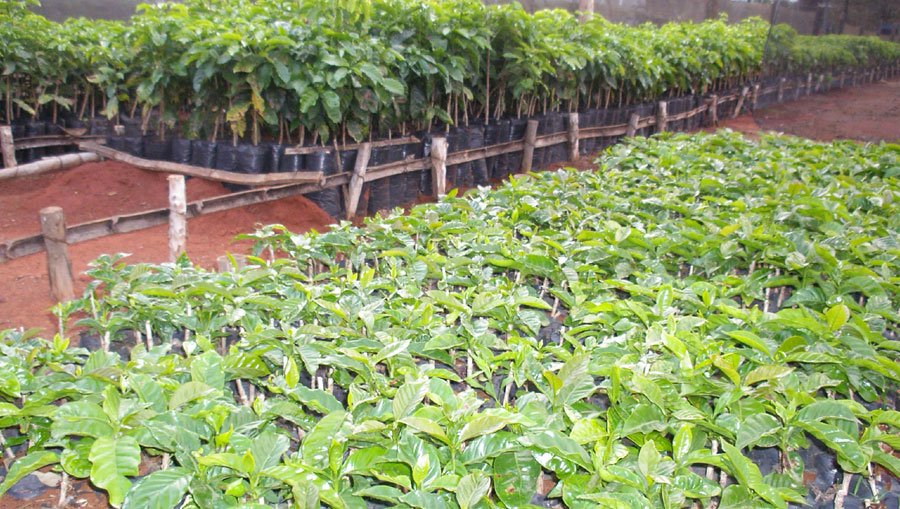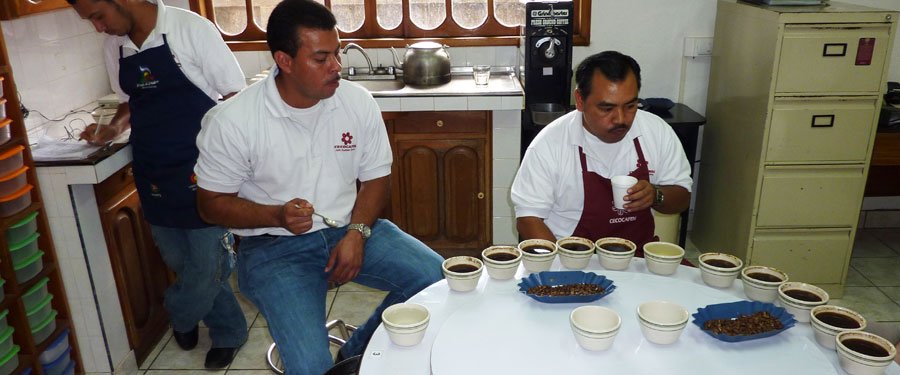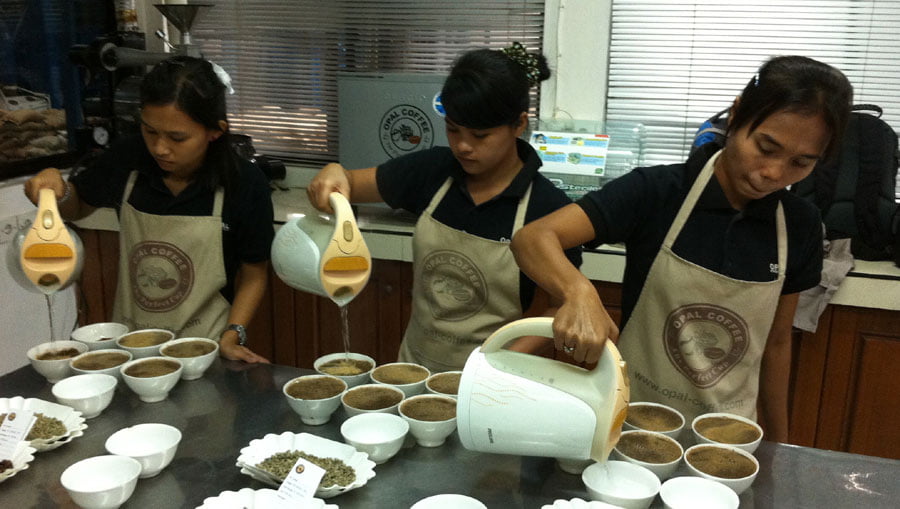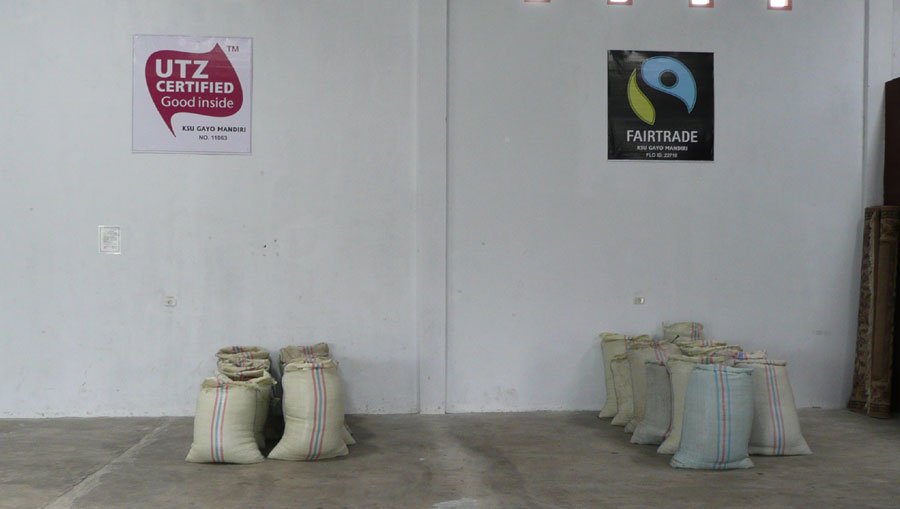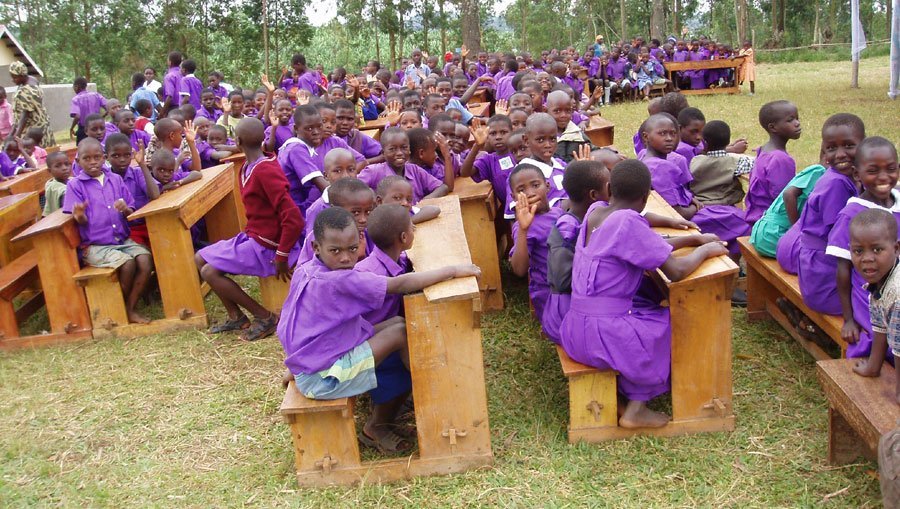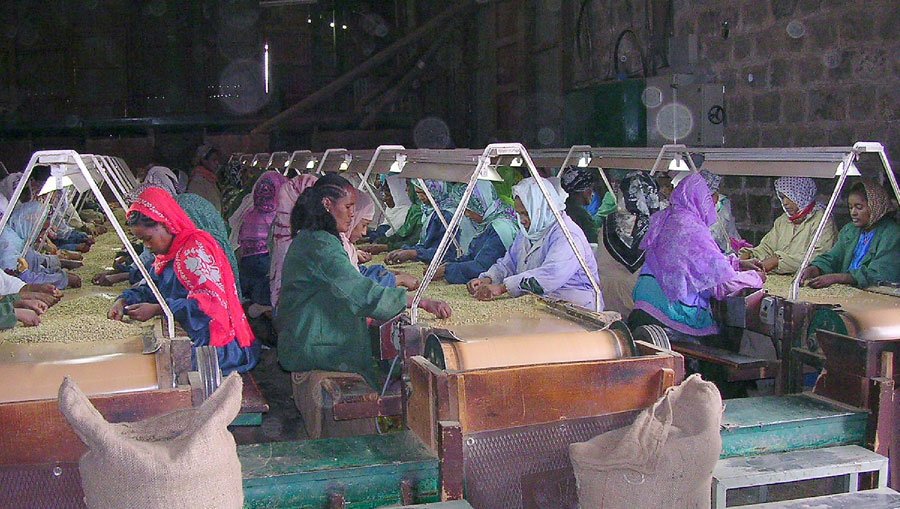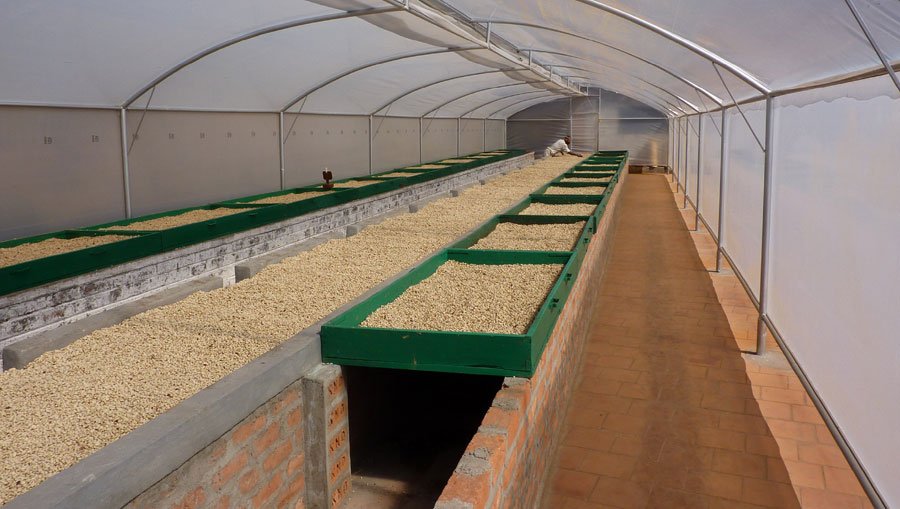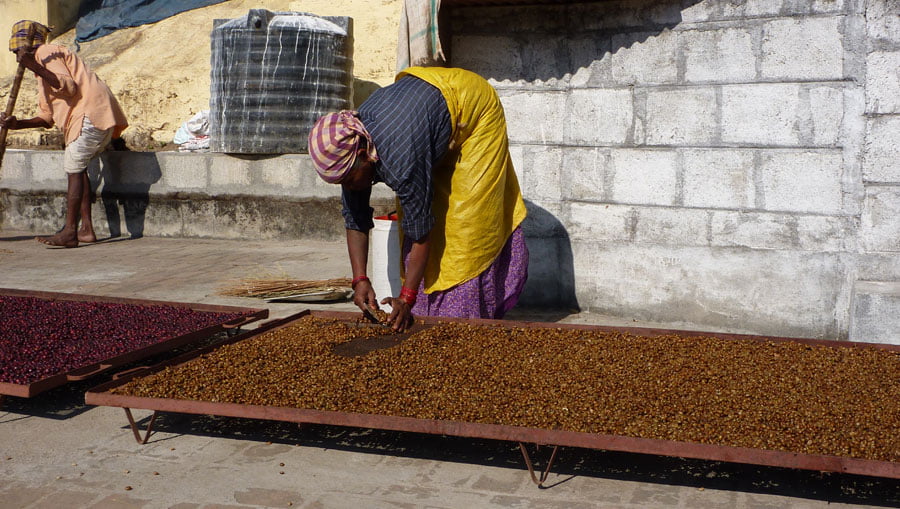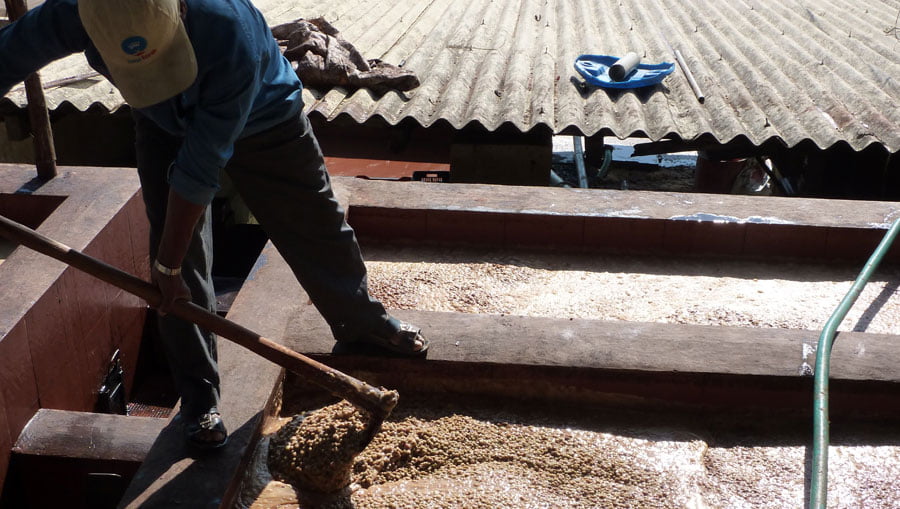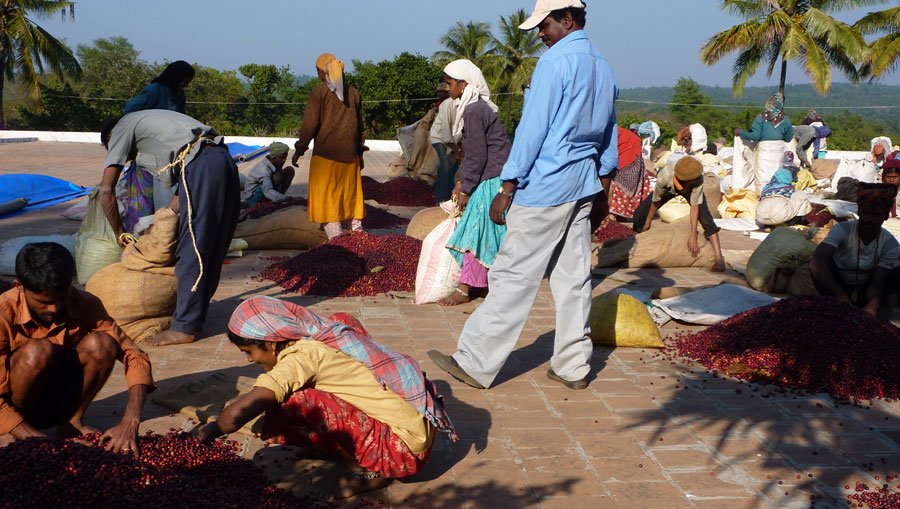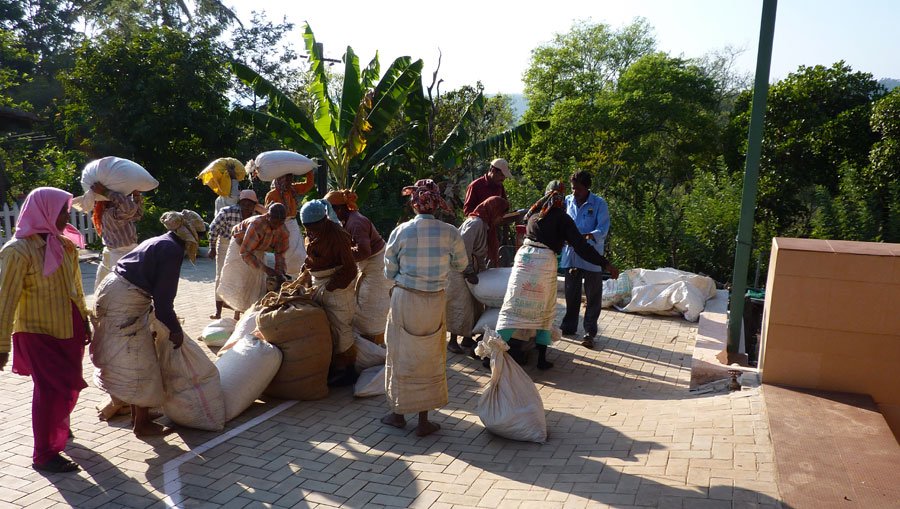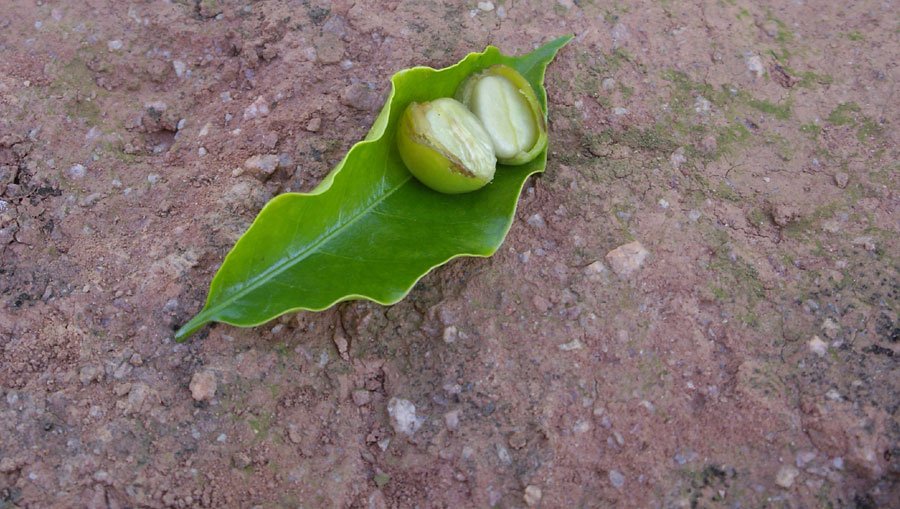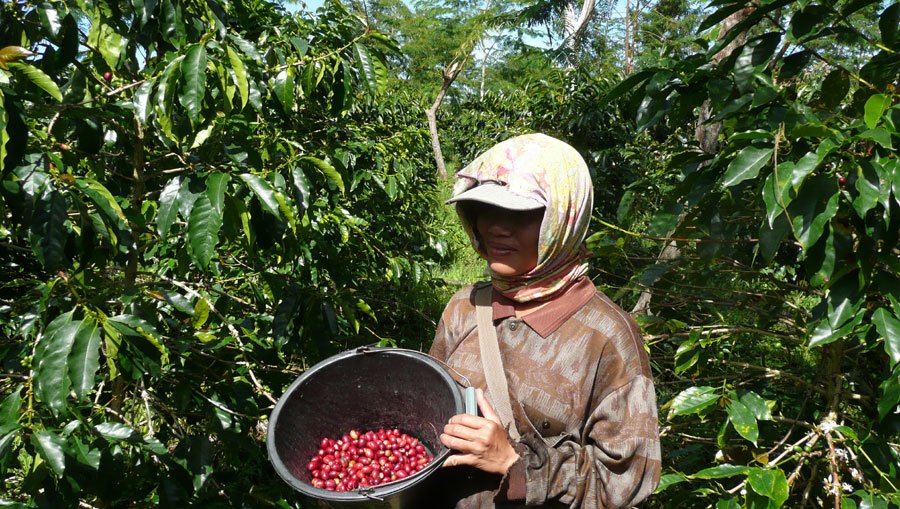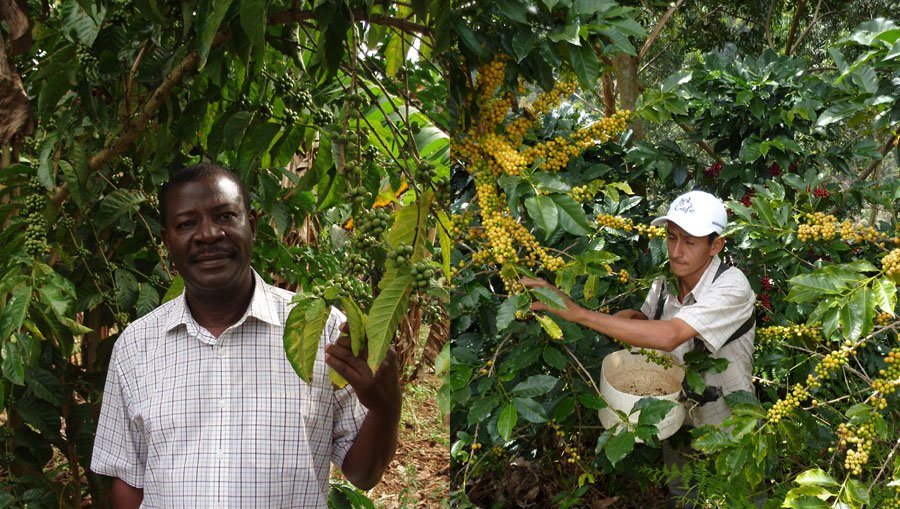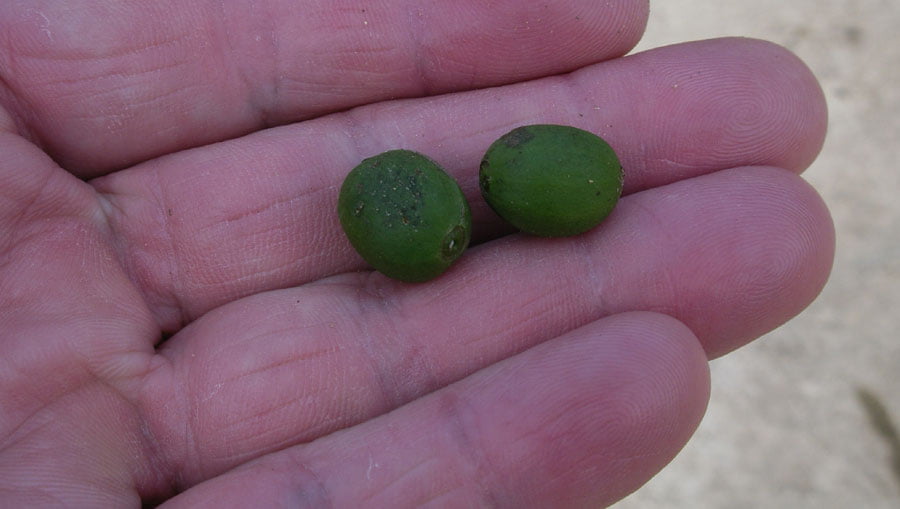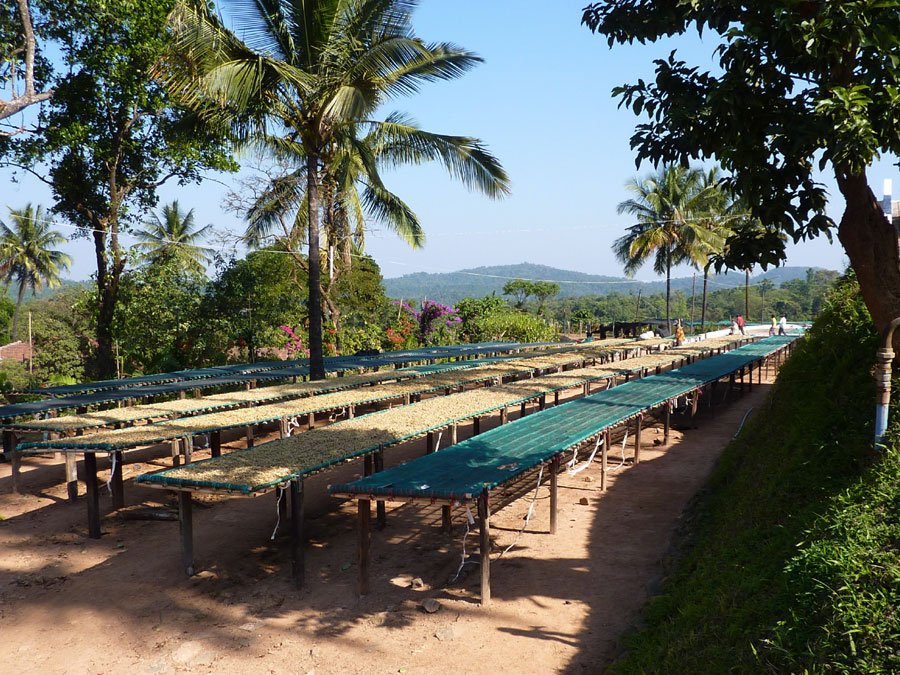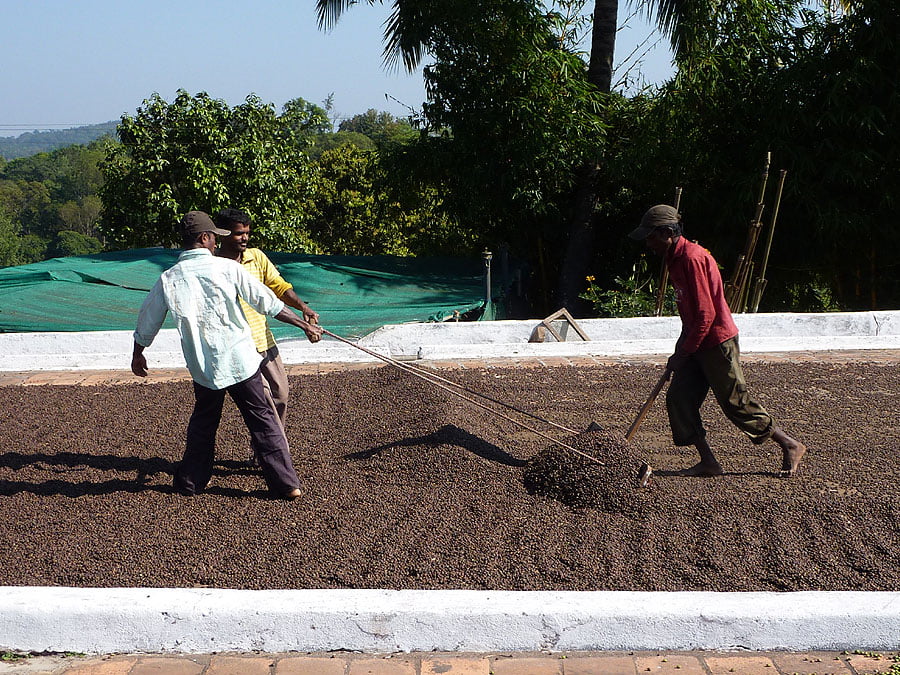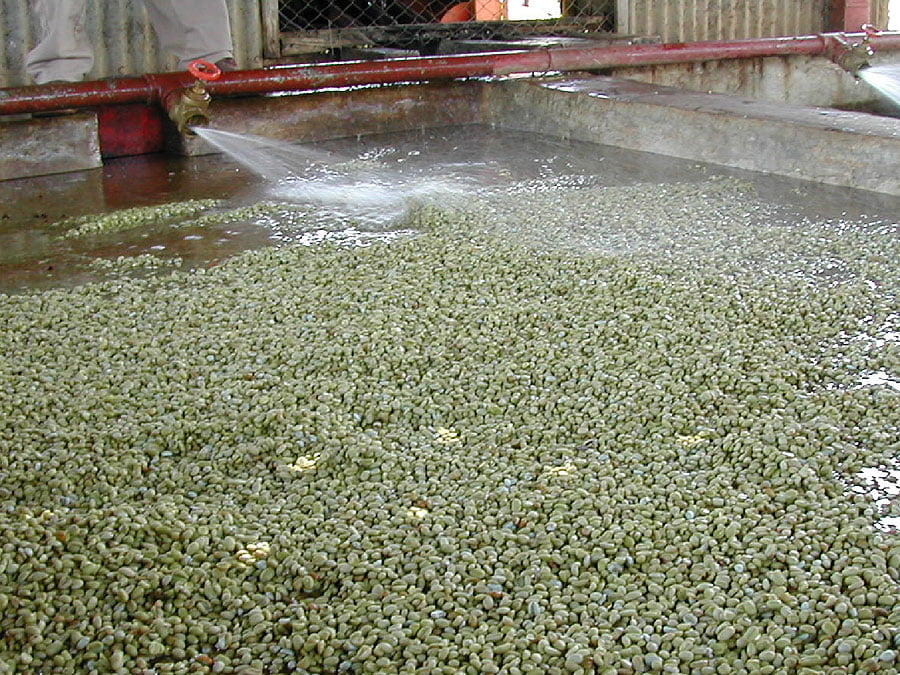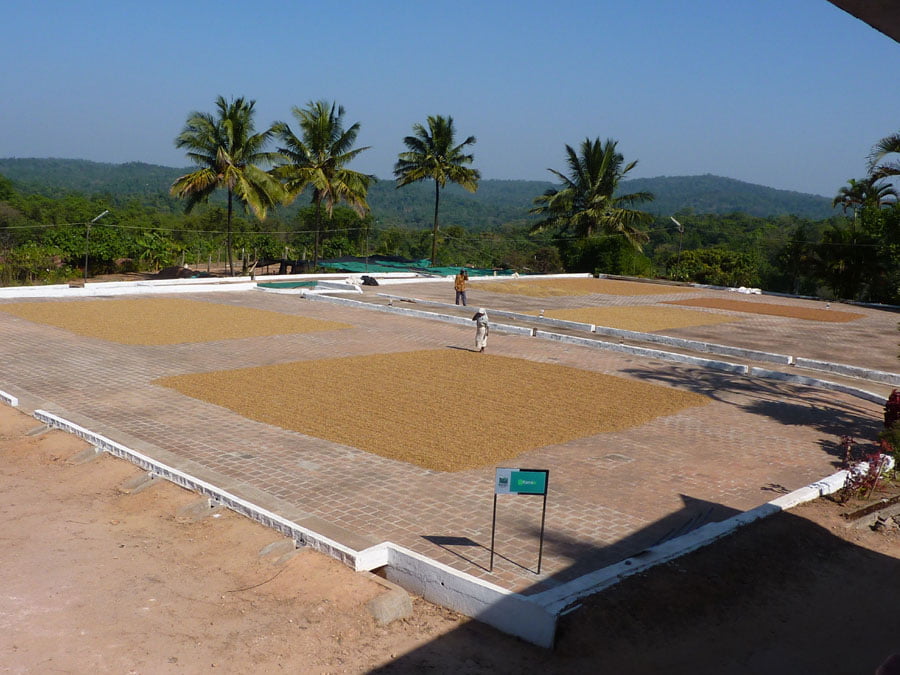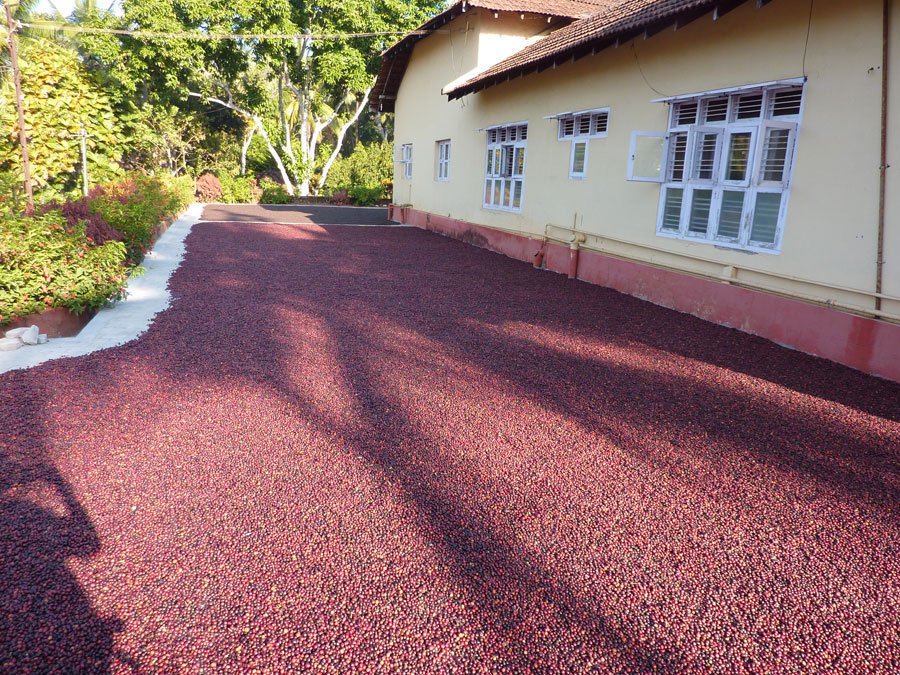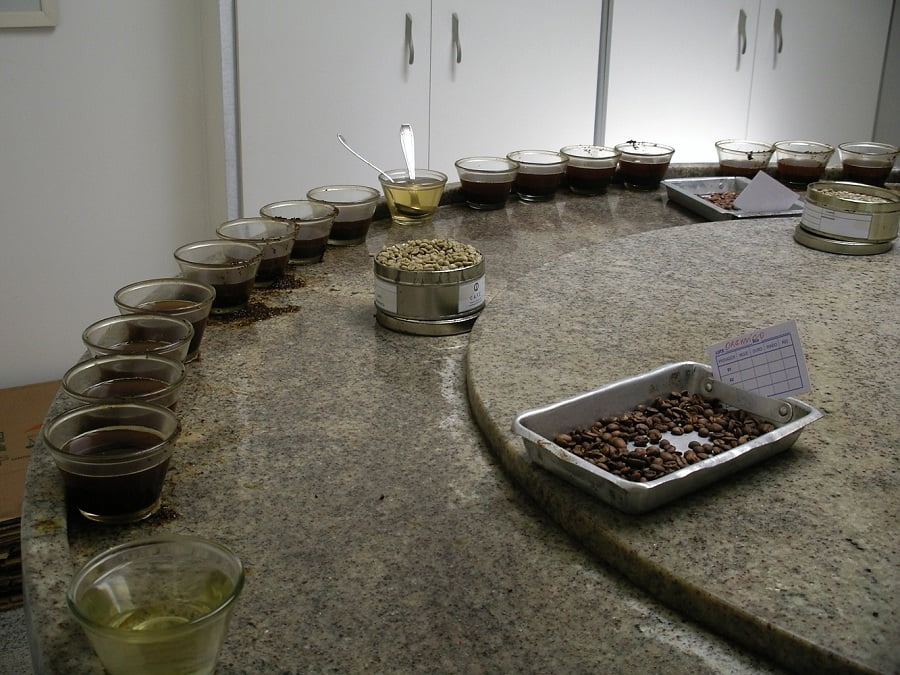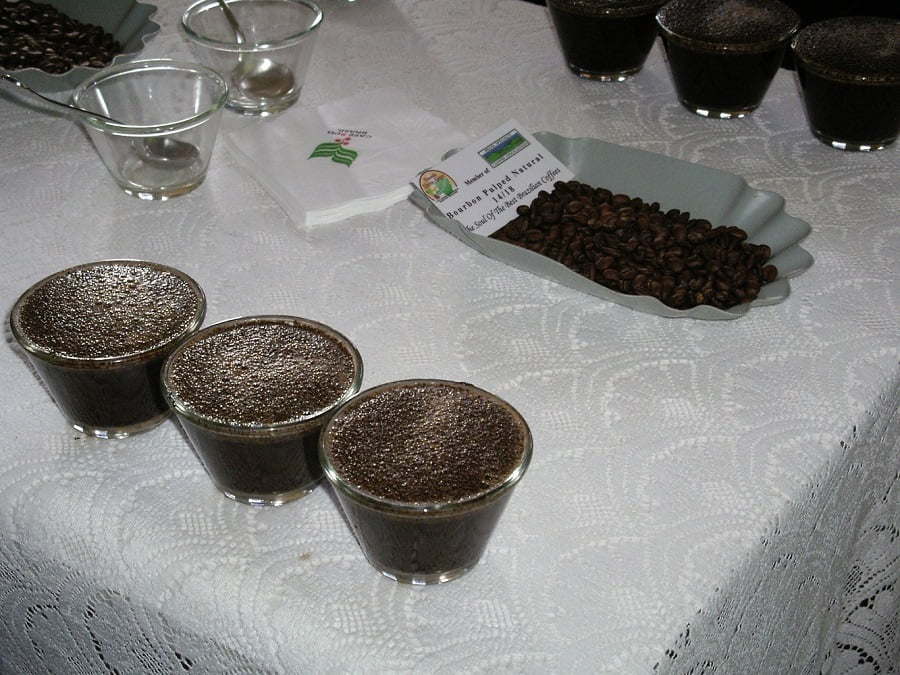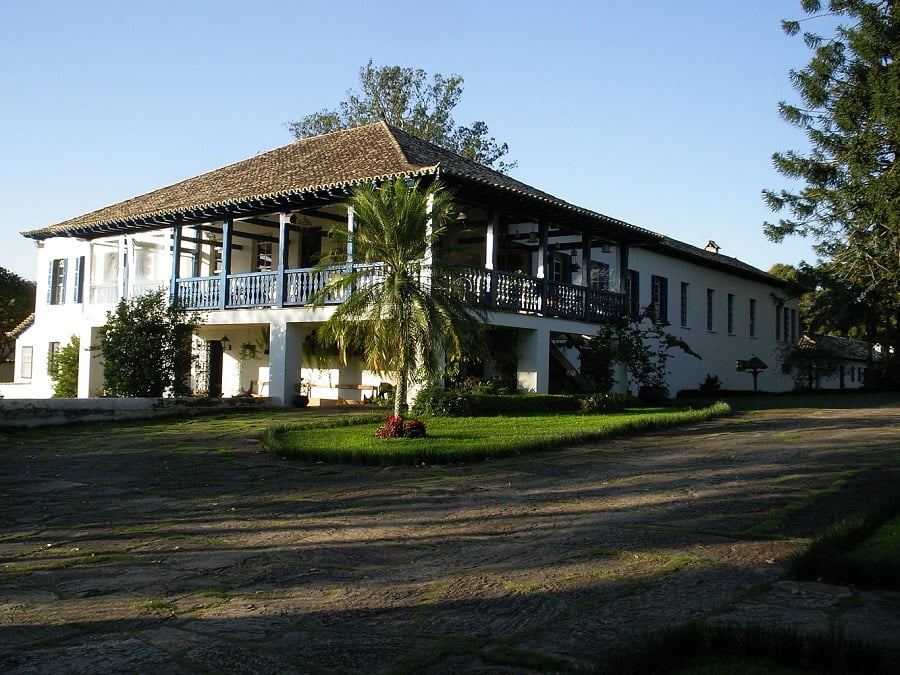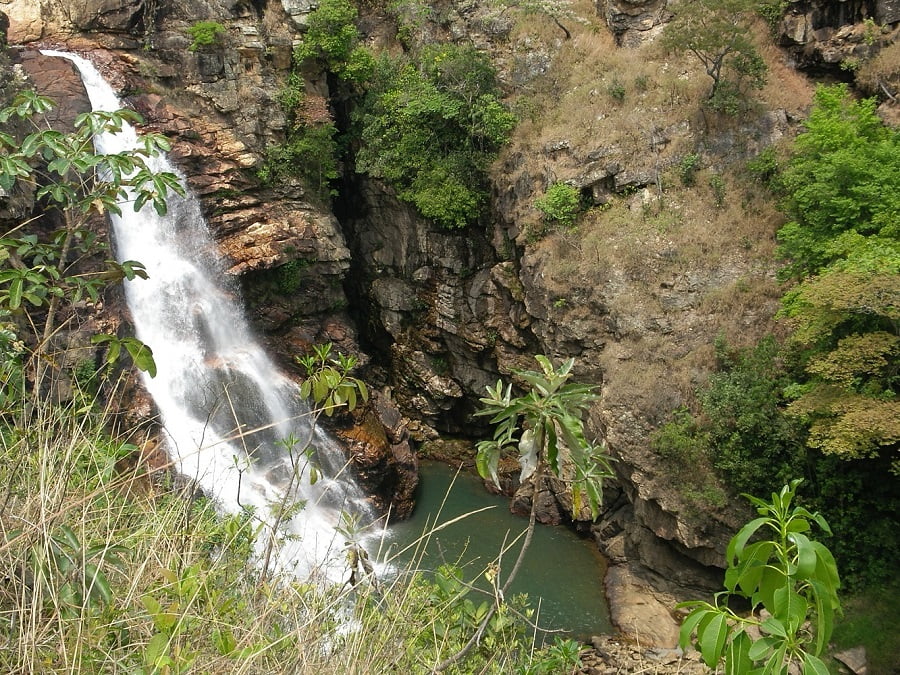Coffee Plantations
Coffee grows well between the Tropics of Cancer and Capricorn; Coffee Trees are normally 2 – 5 metres high with roots of one metre and requires about 1,500 to 2,000 mm of Rainfall per year.
Coffee Trees come in 2 main species, Arabica which is grown at higher altitudes and offer a rounded, softer, aromatic and syrup / chocolate / caramel character and Robusta, which is grown at lower levels producing higher yields but offers a harsher and more earthy liquoring quality.
The best plantations are located at higher altitudes with a mild climate of between 15 – 25 degrees centigrade and most notably needs to be free from frosts and heavy winds and extreme conditions.
Plantations vary in size from small family run farms where everyone is involved hand picking the crop, cherry by cherry up to large farms with undulating lands that stretch as far as the eye can see for up to 2,000 acres.
From Seed to Harvest
Seedlings are cultivated and planted at different levels of intensity, from 2,000 seedlings per hectare (40% of an acre) to 12,000 seedlings for much larger yields. Only in their third year do the Coffee bushes become commercially viable, their peak capacity is achieved during years 4 to 10 and after 20 years of life the bushes yield begins to decline. Careful and sophisticated husbandry on these farms is essential as the plants are vulnerable to rust (a fungus) and insect damage (Borer beetle which drills into the beans) and all bushes must be cleared of all debris such as dislodged berries after the harvest has been completed to prevent this. Ensuring that the right amount of nutrients and suitable irrigation is afforded to the coffee bushes at all times will enable the trees to remain vibrant and healthy.
After the flowering process has been completed, which at this time looks like the bushes are snow- capped and is a wonderfully fragrant time for these gardens, three weeks after this event the bushes germinate with small balls coming through, another 6 – 8 months later and these fruits ripen into Red and Yellow cherries.
Depending on the style of plantation, when the berries are ripe to be harvested, these cherries will be handpicked, stripped from the branch or have huge mechanical arches that run over the lines of bushes and which vibrates the trees dislodges the cherries and also bits of twig and leaf.
Once harvested, the task is to get the picked cherries transported to the process facility within 2 hours of harvest otherwise mould will set in (twigs and leaves that are collected are to be used as a natural fertiliser and replanted back into the bushes roots).
The primary purpose is to dry the seeds (inside the cherry), mature cherries are soaked in water to clean and separate them from the twigs and leaves and to clean off any impurities that exist and most importantly reduce the humidity within the Bean.
Harvesting the Beans
There are three methods to harvest the crop, each version has a defining effect on the Cup character of the Coffee produced.
Natural Method
The simplest process, whereby the Sugar from the Pulp is absorbed by the Bean, this results in a stronger full-bodied style of coffee. The cherries are washed, cleaned and a combination of Water and Compressed Air separate the foliage (via a metal sieve), the cherries are then separated into two groups, green and ripe beans which are heavier and consequently sink to the bottom, the overripe types (which are by now nearly dry) will float to the top.
The next stage is drying the Cherries, often on large expansive concrete areas, these will be spread over this area with regular ‘turning over’ required in the sunlight. This is a particularly laborious task and it takes 5 – 10 days to complete and is always vulnerable to rainfall which will undermine the drying process and can also cause mould (some farmers choose to cover these areas with see through tops to allow the sunshine in). A more controllable option is using mechanical dryers, obviously thereby incurring considerable capital cost to install) to achieve the optimum humidity within the Bean of 11%. The Beans are now a Dark brown colour and these cherries will be stored in special wooden containers for 3 to 6 weeks.
Semi Washed
After cleaning, the Cherries are separated from the Husks by machines that press them against metal screens, this is a process that needs to be implemented within 2 hours of harvest otherwise mould will set in and again this incurs a considerable capital cost to install for the operator but will not involve as much space needing to be available and labour to required complete this task.
Washed Process
High pressure water removes the mucilage but special care must be taken to ensure that the parchment skin around the seed remains intact and undamaged.

Tudor was the first company in the catering industry to offer a 100% Rainforest Alliance Certified™ blend of tea which is now complemented by our Rainforest Alliance™ coffee (100% Arabica) and hot chocolate products.
The Rainforest Alliance Certified™ seal is your guarantee that the coffee, tea and cocoa are grown on farms where forests are protected; rivers, soils and wildlife conserved; workers are treated with respect, paid decent wages, properly equipped and given access to education and medical care.
Fermentation via Enzymatic Reaction
The Beans are put in large tanks for between 12 – 36 hours, so the mucilaginous pulp is dissolved by fermentation, this is an extremely delicate process, requiring great concentration and during this period the Coffee cherries exude an amazing aroma similar to a winery. Once dried to the optimum humidity within the Bean of 11%, the Beans are then are then stored in special wooden containers for 3 to 6 weeks so as to equalise the humidity levels.
Husk Removal & Sorting
This process is hugely important, it represents the final stages of Green Coffee preparation, sorting and separating the imperfect Beans after the husk and parchment removal has taken place, the Beans are sorter by size and density, eliminating any defects and possible small stones. Once graded, normally by vibration and compressed air and furthermore on the more sophisticated operations, electronic equipment assesses and deflects away any defective beans at high speed too.
The Coffee is now cupped (Tasted) for grading and quality assessment and packed into Jute / Hessian sacks to ensure no odours are absorbed by the Green Coffee and made ready for export to ensure it arrives in top condition at our Roastery in due course.
Tasting and assessment
Cup Characteristics sought: Acidity, Body, Aroma and free of Taints
Grading
- 1 Speciality 0 – 5 defects per 300 grams of Beans (about 2,000 Beans)
- 2 Premium 0 – 8 defects per 300 grams of Beans (about 2,000 Beans)
Defects are identified as follows;
Black Beans, Small and Large Twigs, Small and Large Stones, small or Large Husks, Beans still in parchment, Broken or immature or Hollow Beans, Malformed or Shelled Beans and Sour Beans and Insect Damaged Coffee Beans as well.
Larger Twigs and stones are penalised much more heavily.
